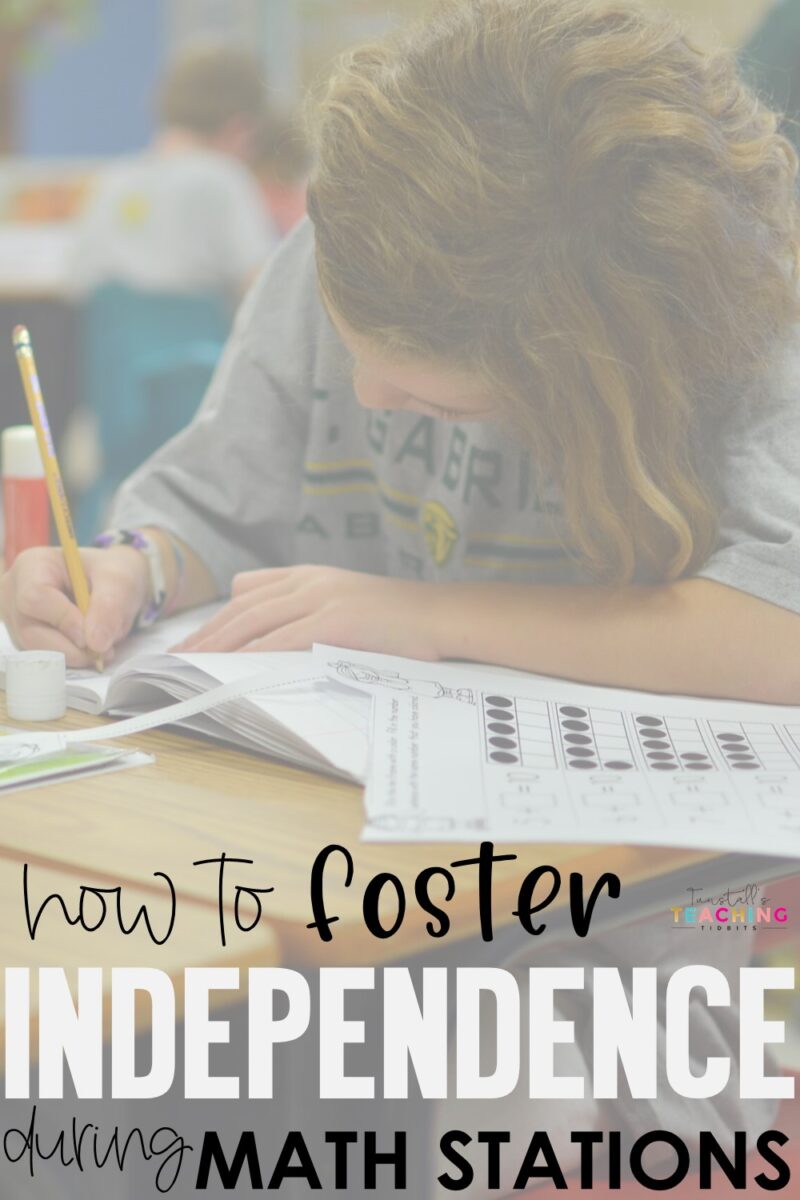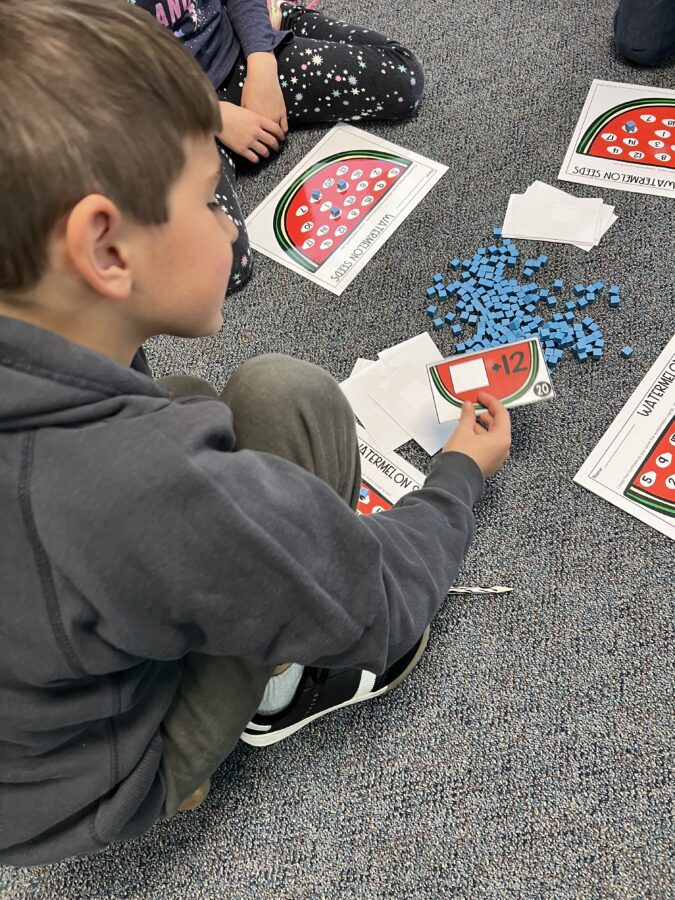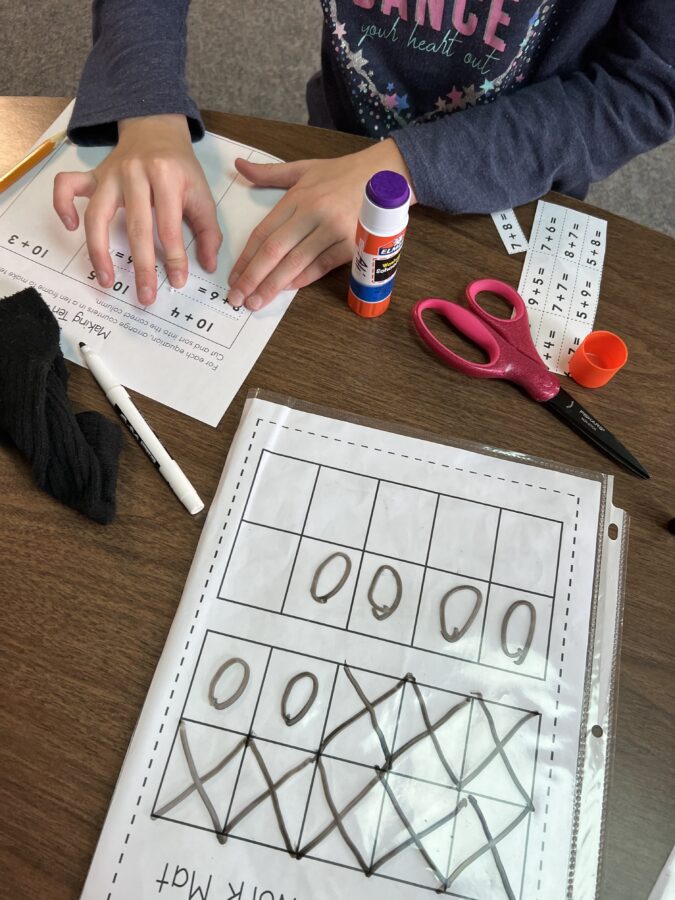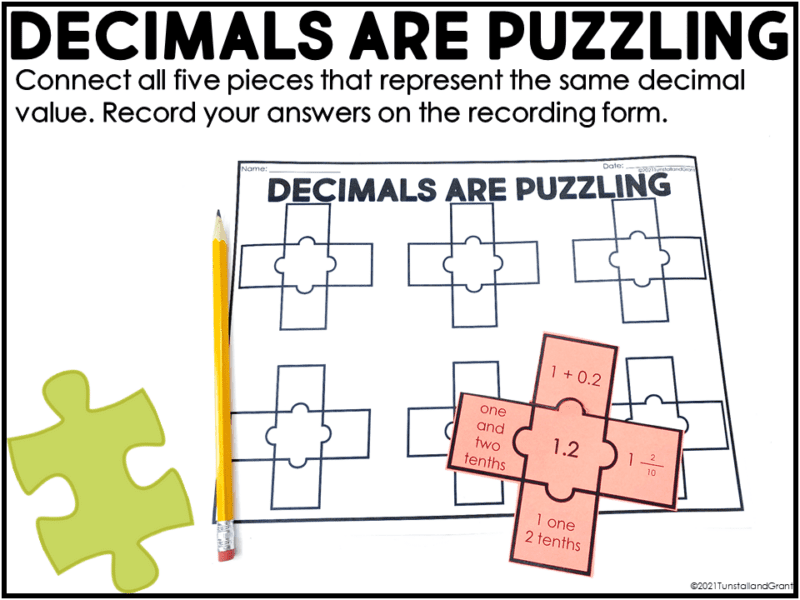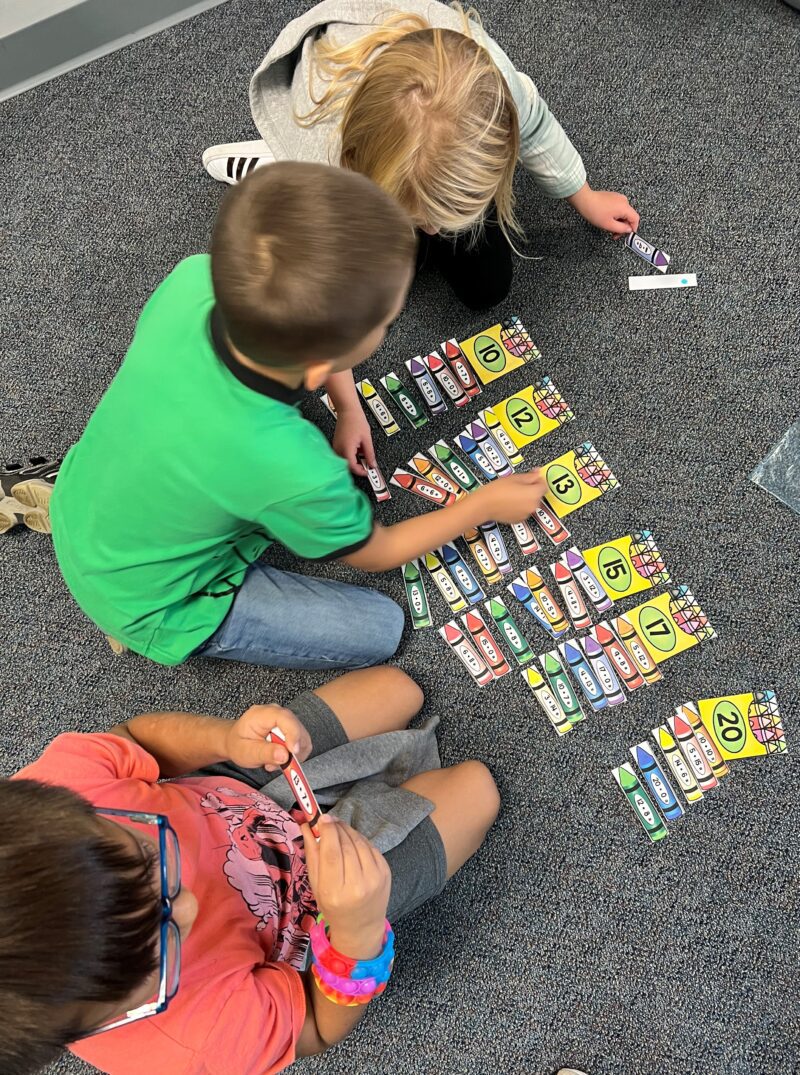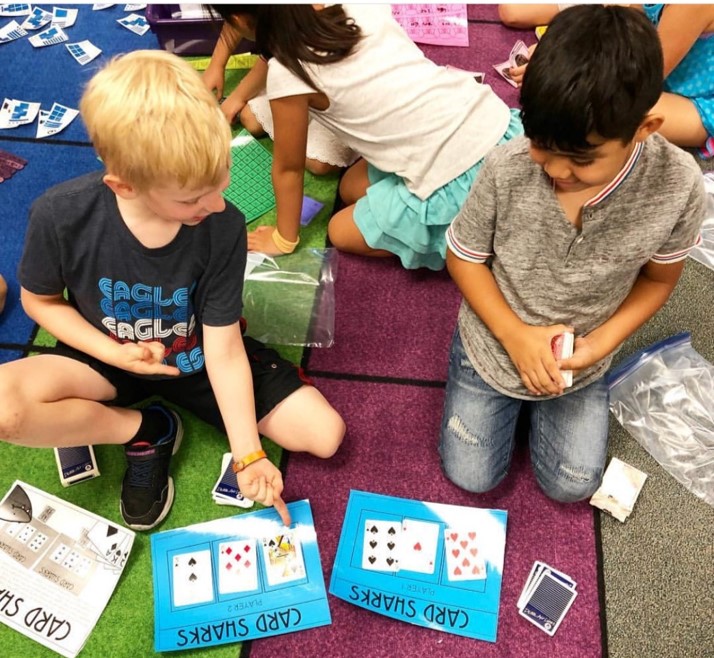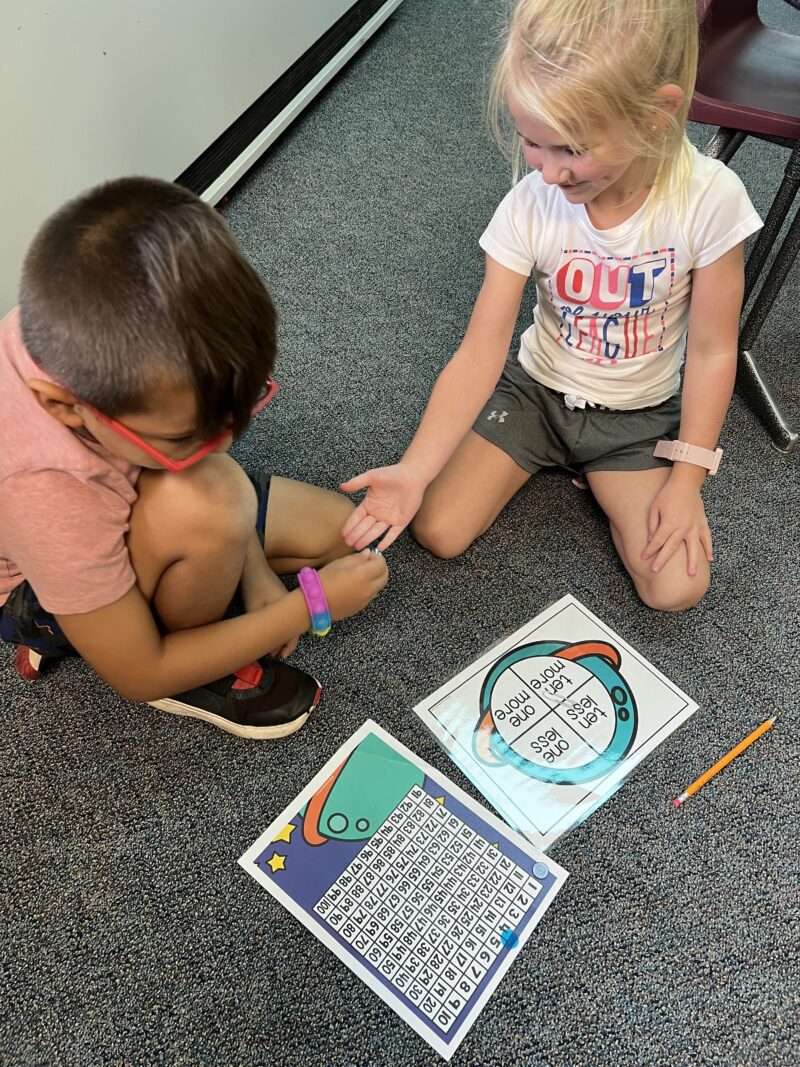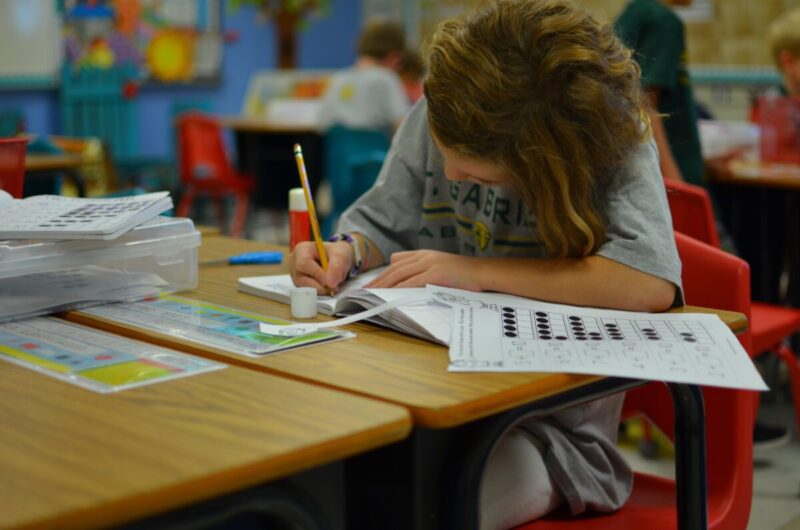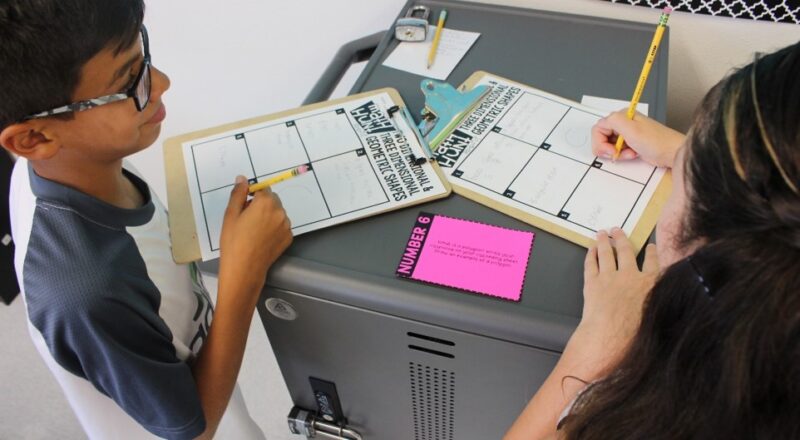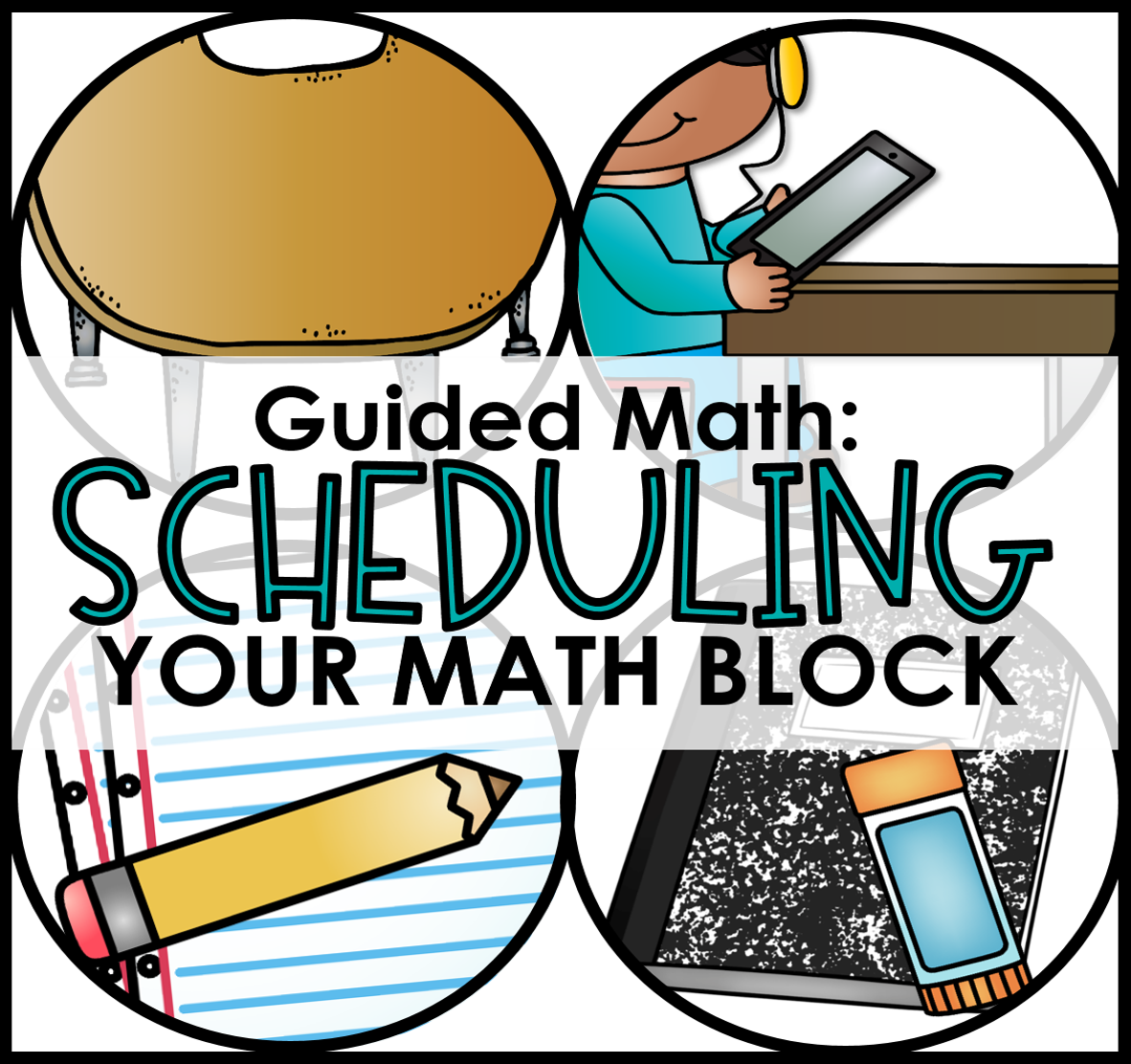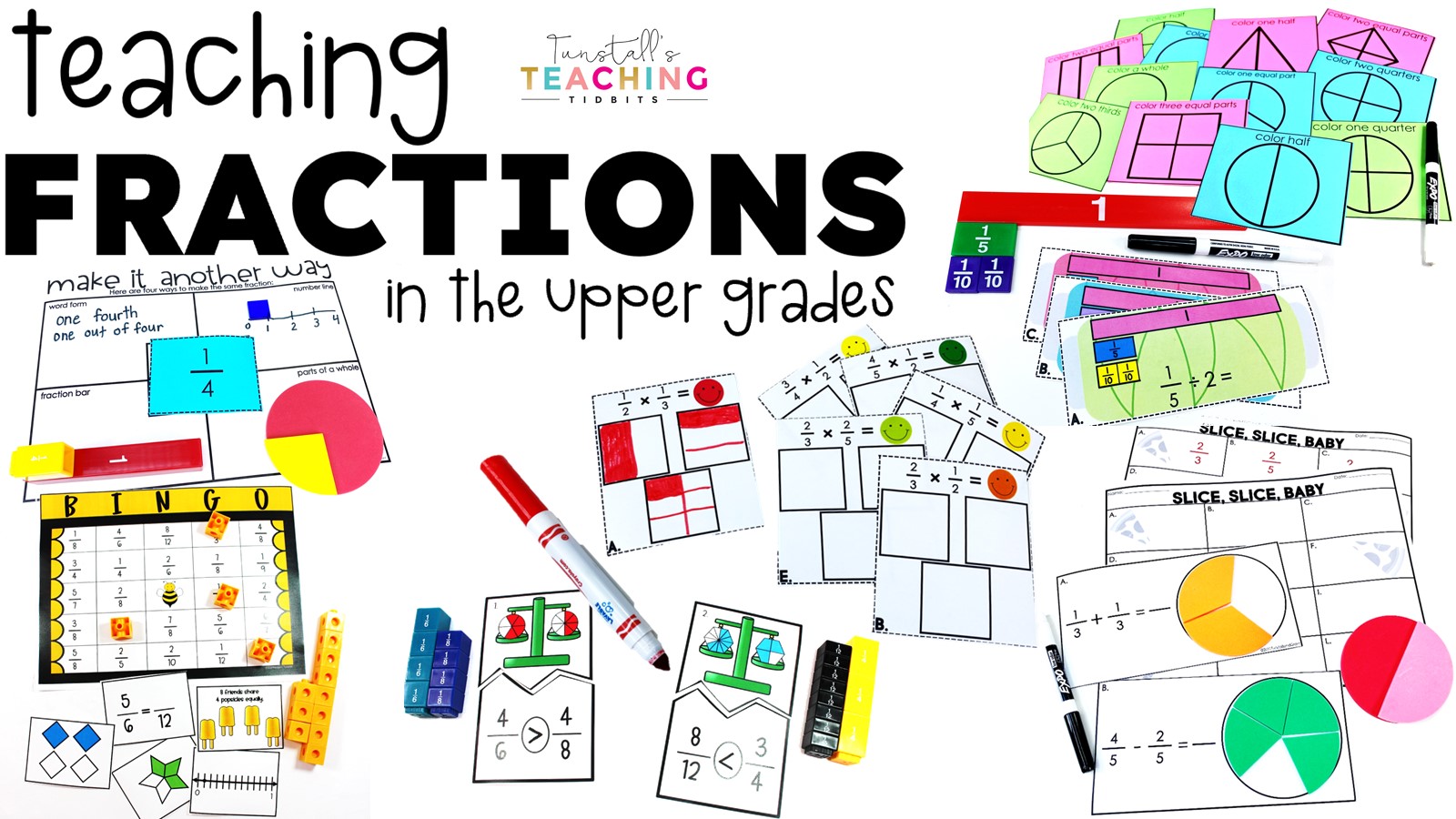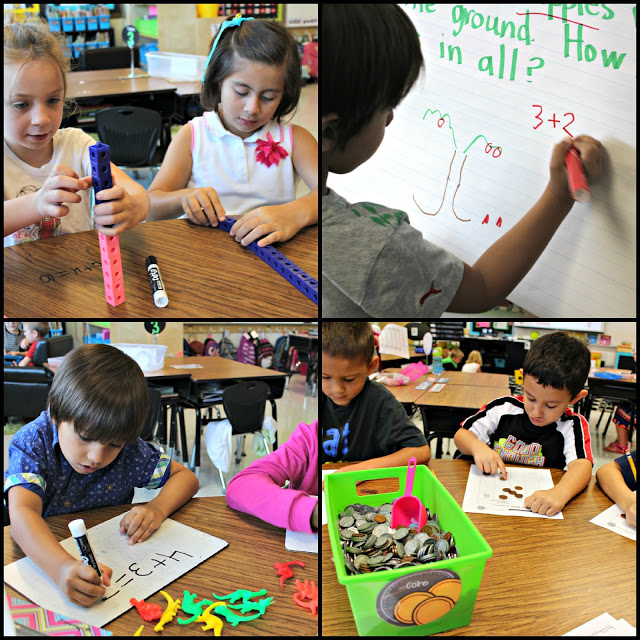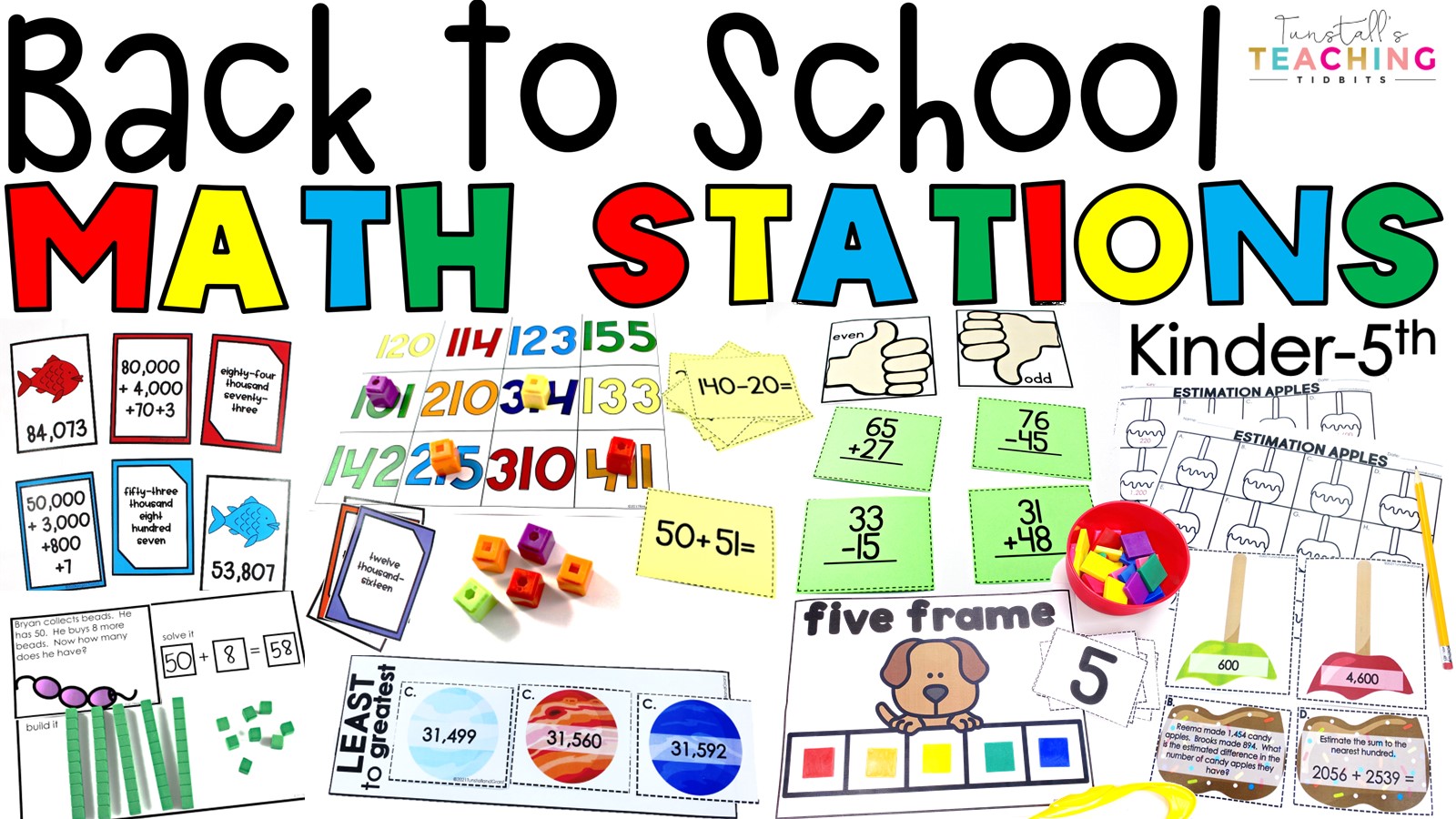How to Foster Independence During Math Stations
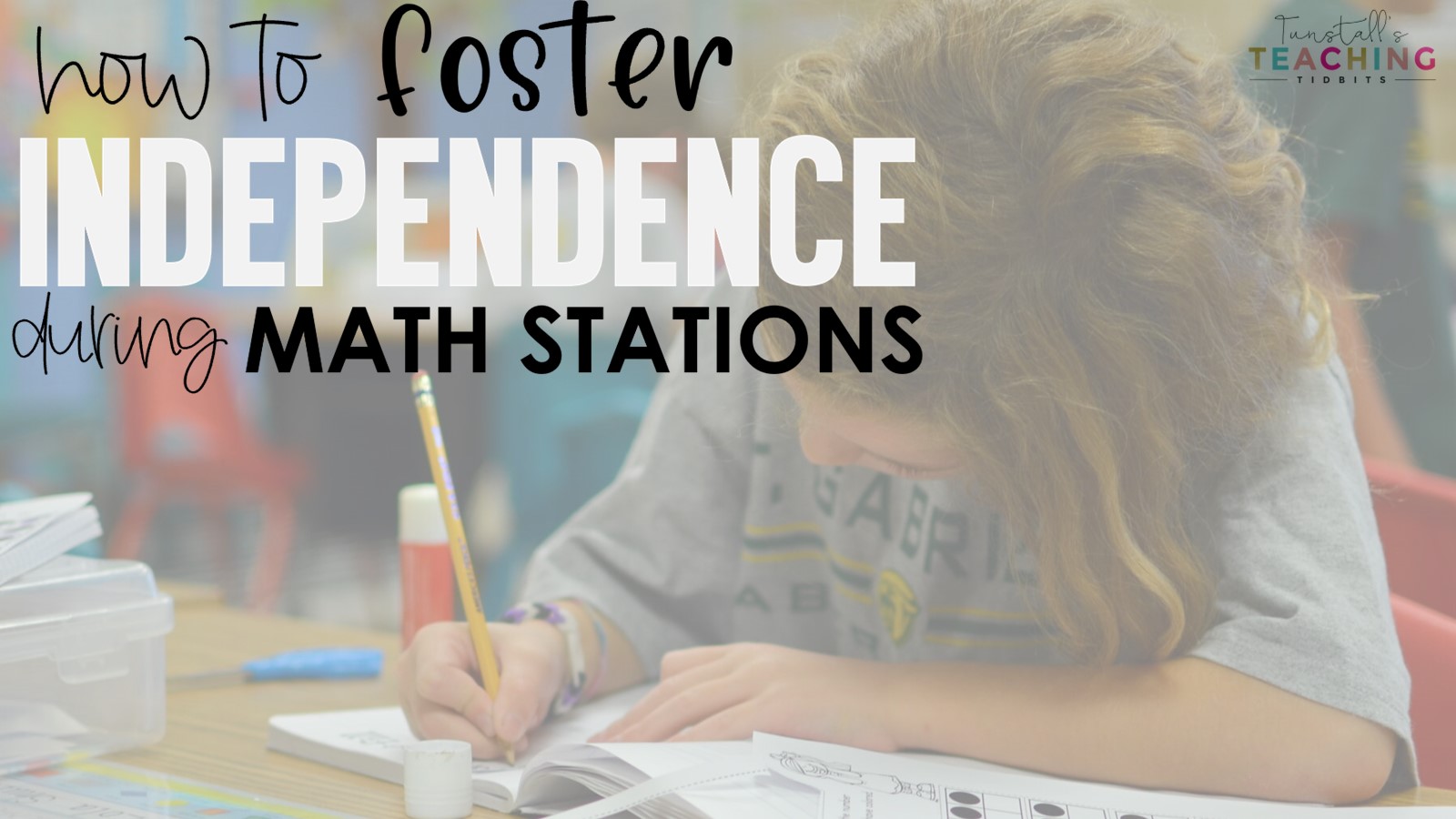
Every teacher struggles with how to foster independence during math stations to some degree during the school year. Although fostering independence is a universal pain point for running math workstations, most teachers take this struggle as a frustrating failure. Let’s shake off that teacher guilt right now! Rather than dwelling on the lack of independence, we can analyze what is happening and put solutions in the place where the chaos appears. This post will focus on how to foster independence during math stations.
HOW TO FOSTER INDEPENDENCE DURING MATH STATIONS
There are many factors involved in why students may be off task or “lost” during math stations, but through all of the grade levels and reasons, we can identify some common threads for this lack of independence and then attach solutions. Before we dive into those problems and solutions, I want to start by being vulnerable and share that even after 18 years of teaching math with the guided math structure, I expect to address the same problems I share in this post. You are not alone in dealing with this issue. It’s an ongoing part of running student workstations. The great news is that students benefit greatly from these solutions in all areas of the school day because we train them to be autonomous problem-solvers.
PROBLEM 1: STUDENTS DON’T REMEMBER WHAT TO DO AT THEIR STATION
Even after we carve out some time to teach the stations, some students or groups may ask, “What do we do here?” immediately, our blood pressure rises, and our hair begins to stand on end. When students are not immediately settling into a station, we can identify this as a Station Start-Up Problem. Identifying the problem helps us categorize it and provide a solution.
Solutions to the Station Start-Up Problem
Just as we sometimes feel anxious when we release students to go off to stations, they also may be anxious about handling the responsibility of being more independent and working with others around the room. Without clear strategies for Station Start-Up, we will likely see some floundering during these moments before students settle in and get that productive hum going. The following are ways to fix the station start-up problem.
- Stations are consistent, but content changes. I have shared my favorite way of running math workstations, which provides a consistent structure of math stations and allows the content to change while the routines remain in place. No matter what system works best for you, finding the consistency of stations is key. The content changes, but the routine remains intact daily. You can read this post to learn about the system I love for running workstations.
- Math Stations are modeled frequently with clues to repeated procedures at each station. Not only do we model stations daily for the first four weeks of school, but we talk through walking up to a station and checking the contents. Is there a spinner? What does that usually mean for a game? If I find dice, what may I be doing at this station? Everything gets discussed and modeled multiple times until students can no longer say I can’t remember how to play.
- Photo instructions and expectations. Even after the stations are modeled, I will place the station instruction photo in the bin for students to reference. All of our stations have a photo to show how the station is set up to be played.
Below is just one example from our fifth grade decimals stations showing how we use a photo to demonstrate the expectations of the station further.
Math Workstations by Grade Level
To search all math activities by grade level, simply click your grade below.
PROBLEM 2: STUDENTS CAN’T DO THE TASKS WITHOUT HELP- Lack of Independence
Students may know the procedures of a station, but the content stops them in their tracks. We immediately see that they have tried to start working knowing what is expected, but then are trying to get help from you or others around them and are generally frustrated and off task or just quietly staring but not engaged in the task. We can identify this as the Skill Standstill.
Solutions to the Skill Standstill
This problem can be fixed by running back to the research on math stations. When we put out content at our math stations, we want to build a well-rounded math experience, but at the top of that experience is refining skills previously taught. This means that we are not putting out new content at stations but rather allowing students to practice and apply skills they are already familiar with. It takes hundreds of repetitions for students to gain automaticity, accuracy, and flexibility with math concepts.
- Stations are a spiral review of skills. We are not matching the stations to the new learning. This is a big misconception that leaves teachers and students frustrated. If some students have gaps in their learning and need to dip into the previous grade level’s skills, workstation time is the perfect time to allow this differentiated practice. We want to provide practice of many previously taught math skills daily in stations. Let go of the need to match.
- Study buddies are available when needed. Whether we use study buddies from our own classroom, those natural leaders that arise, or we have a teacher buddy send down an upper grade apprentice during some of our workstation time, student helpers make a big difference in keeping classmates on track.
- Practice makes way for improvement. Even with strategies in place, it takes time for students to become autonomous with everything. Stay the course, and don’t get discouraged when you have a rough patch. We are training students for long-term goals and independent learning in their school careers.
PROBLEM 3: STUDENTS DON’T REMAIN ON TASK THE WHOLE TIME
This task is one that we sense as it slowly builds through the station round or time. Our “spidey sense” as teachers kicks in, and we sense a level of restlessness is beginning to brew among our stations. If left unaddressed, we find ourselves as the new Mayor of Math Mayhem. Below are three ways to address the problem.
Solutions to becoming the Mayor of Math Mayhem
- Expectations for stations are clear and frequently discussed. While I live at the teacher-led small group table during math workstations, I also pop up without warning during math stations to walk the room. This reminds students to stay focused and accountable. During my lap around the room, I will take action shots with my phone of students for future discussions on expectations. This is always done as a praise report. When we consistently show students what we expect, there’s no wiggle room for mayhem.
- Sense of urgency. Just as we have high expectations for remaining on task, we also have clear expectations of finishing work before moving to the next station. Students must finish their assignments, recording sheets, or activities even if the round ends.
- Stations are engaging, thought-provoking assignments and activities. Sometimes, students don’t stay on task because the tasks are not engaging enough. While it is not our job to entertain students, we can hold interest by providing stations that interest and engage student attention.
PROBLEM 4: STUDENTS FINISH THE TASK TOO EARLY
Fast finishers are inevitable when we task students with math independent practice. Every class has students who work not only quickly but with high-quality work. This is to be expected when we have a couple of students who require more during math stations. When just under half the class finishes early, and mayhem ensues, we need to look at more diagnostic solutions. We will lovingly identify this problem as Fast Finisher Fiasco.
Solutions for the Fast Finisher Fiasco
- Expert Tubs. Every class needs something in place for the high-performing students who work beautifully and pace faster than most of their peers. This is nothing to fret about and is not a real problem. Read this post for ideas for expert tubs, which are my extension activities during math stations.
- Pacing. When the fast finisher syndrome becomes more than a couple of students, we must look closer at our pacing. Students either have too much time to complete tasks, or the tasks given are not meaty enough for the time expectation. We want to track our students’ natural stamina and pace to the majority. It’s okay to shorten rounds and then later add more time as concepts become more involved and require more time.
- Grading/Accountability When we see that students are not so much finishing quickly but are not completing the tasks, then it may be our accountability system that could provide a permanent solution. I grade weekly on Thursdays, using Friday as our make-up day. When students show a pattern of unfinished work, they must show me work daily. After time passes, students accept that they are fully accountable for the work at every station.
PROBLEM 5: STUDENTS CAN’T FINISH THE TASK IN THE TIME GIVEN
We all know that we have a range of developmental abilities present in every class every year. So, we all likely have a couple of students who cannot pace to most of the class or to the tasks and rounds we assign during workstations. I lovingly call this problem the Molasses Mathematicians. This refers to students who are giving their best and trying hard but cannot pace. I notice these students because they are stuck at the same station consistently far after the timer rings to rotate. We most definitely need to address this problem because we want every student to experience math workstations to their fullest in a positive manner.
Solutions to Molasses Mathematicians
- Modified tasks When I notice a student who struggles to pace consistently, I simply pull that student into a quick, private conversation where I modify the task, causing the holdup. I will say, “Once you do this row, you can place the paper in your folder and rotate.” This ensures that all mathematicians experience workstations to their fullest. We don’t want students to be stuck struggling and having a negative experience day after day. Ultimately, we want all students to pace, but sometimes, we must consider unique needs or goals to help students succeed individually.
Math Workstations by Grade Level
To search all math activities by grade level, simply click your grade below.
ALL IN A DAY’S WORK- FINAL THOUGHTS
How to Foster Independence During Math Workstations
Even as we implement solutions to foster independence, we will experience highs and lows during different cycles of content and weeks of learning. This is perfectly normal when we are running a classroom. Our classrooms have around twenty young mathematicians with different developmental and ability levels. Routines might be a part of some students’ daily home life, but not all of our students have structure and expectations outside the classroom. Grace for any level of student effort and our efforts should be heavily dosed. Ultimately, we keep our eyes focused on the goal of an autonomous, productive workstation time.
This autonomy allows us to meet with students in teacher-led small groups to address the important skills and concepts for our grade level. By doing this, we ensure students have the highest potential for acquiring the skills needed to be successfully empowered mathematicians throughout their school careers. It won’t happen immediately, but we continually set students up for future success by providing solutions to make students engage in independent learning during math workstations.

 Contact Us
Contact Us